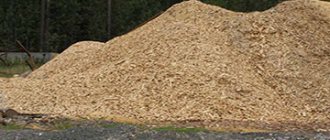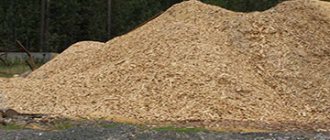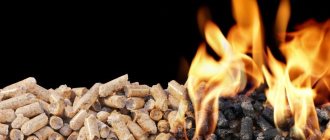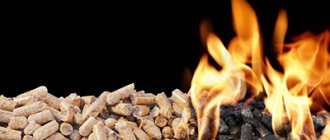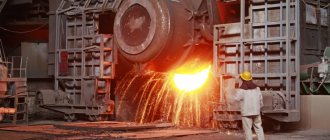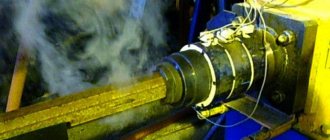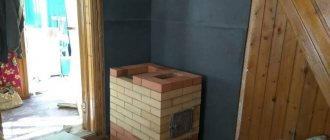array(3) { [0]=> array(40) { [0]=> string(113) «
" [1]=> string(113) "" [2]=> string(113) "" [3]=> string(115) "
" [4]=> string(113) "
" [5]=> string(113) "
" [6]=> string(113) "
" [7]=> string(113) "
" [8]=> string(115) "
" [9]=> string(115) "
" [10]=> string(115) "
" [11]=> string(115) "
" [12]=> string(115) "
" [13]=> string(115) "
" [14]=> string(115) "
" [15]=> string(115) "
" [16]=> string(115) "
" [17]=> string(115) "
" [18]=> string(115) "
" [19]=> string(115) "
" [20]=> string(115) "
" [21]=> string(115) "
" [22]=> string(113) "" [23]=> string(115) "
" [24]=> string(115) "
" [25]=> string(115) "" [26]=> string(115) "
" [27]=> string(115) "
" [28]=> string(115) "" [29]=> string(115) "
" [30]=> string(115) "
" [31]=> string(115) "" [32]=> string(115) "
" [33]=> string(115) "
" [34]=> string(115) "
" [35]=> string(115) "
" [36]=> string(115) "" [37]=> string(115) "" [38]=> string(115) "" [39]=> string(115) "
" } [1]=> array(40) { [0]=> string(62) "/wp-content/uploads/8/2/f/82fb5a32c12ed7944aba4b724a052cd8.jpg" [1]=> string(62) "/ wp-content/uploads/f/c/d/fcd51a60d6bf837f0ce456d6762be434.jpg" [2]=> string(62) "/wp-content/uploads/7/2/7/7272a9595a83900dbf99f685db06f682.jpg" [3]=> string( 63) “/wp-content/uploads/5/4/d/54dbb5b4470dfe79438f02b3771e1258.jpeg” [4]=> string(62) “/wp-content/uploads/f/a/6/fa63e05b2ed2c9a941c9301d1f023446.jpg” [5] => string(62) "/wp-content/uploads/a/8/c/a8cfe656efe916a22c8b66a3dc4db315.jpg" [6]=> string(62) "/wp-content/uploads/8/4/c/84cdd4fe2e3aacb1196d0baaceb4c1dd.jpg " [7]=> string(62) "/wp-content/uploads/0/5/3/053064d3c32f44b31280a13eaec57ce8.jpg" [8]=> string(63) "/wp-content/uploads/9/4/f /94faeea6adce091d791ceb34924e9ced.jpeg" [9]=> string(63) "/wp-content/uploads/2/c/d/2cd44c23eb8afa99ce914bd2f669c936.jpeg" [10]=> string(63) "/wp-content/uploads/f /6/c/f6c366e2874fb5f11b22f1435d8aeda3.jpeg" [11]=> string(63) "/wp-content/uploads/1/5/2/152b77fe1abb23bd84cf4eb2b449bc10.jpeg" [12]=> string(63) "/wp-content /uploads/d/5/5/d55d3d4113c4bbbf95146d9fd862cb7c.jpeg" [13]=> string(63) "/wp-content/uploads/6/9/a/69a9a848ba5b52a83242a421b586f131.jpeg" [14]=> string(63) " /wp-content/uploads/d/f/3/df33f600ddbb4a77df4e3088fb26ed1f.jpeg" [15]=> string(63) "/wp-content/uploads/0/4/3/0439f934727629cedc3fcc9073c587d3.jpeg" [16]=> string (63) “/wp-content/uploads/7/a/d/7ad86e76bcc035628bd827c0dc5ac657.jpeg” [17]=> string(63) “/wp-content/uploads/5/8/e/58e42f86cfc449a1de0baa5d5d63e0b9.jpeg” [18 ]=> string(63) "/wp-content/uploads/f/0/8/f0866a6c5521b2d421e24f836757ecef.jpeg" [19]=> string(63) "/wp-content/uploads/5/b/a/5bac6f8acf7f6adffff966dde64eeea7. jpeg" [20]=> string(63) "/wp-content/uploads/1/6/3/16311622fd907ed90256d2d4250950e5.jpeg" [21]=> string(63) "/wp-content/uploads/e/d/ 6/ed6ef0c5cfaa77d2b7bb80353704280a.jpeg" [22]=> string(62) "/wp-content/uploads/7/9/d/79da9c4ea3a1b5e6e704cef488016c14.png" [23]=> string(63) "/wp-content/uploads/ 5/4/6/5466c9dc1ea6b1b6c1971de5e04b9558.jpeg" [24]=> string(63) "/wp-content/uploads/1/c/b/1cb559c4e94aff99611972b712ab6638.jpeg" [25]=> string(63) "/wp- content/uploads/3/9/8/398ff1c31935cbc8bd4b30929f58100d.jpeg" [26]=> string(63) "/wp-content/uploads/8/d/f/8df32fe0d48a739de2faf81d23f93cfd.jpeg" [27]=> string(63) “/wp-content/uploads/b/d/e/bded8c3570769f4d5c29631dd7ac983e.jpeg” [28]=> string(63) “/wp-content/uploads/1/c/1/1c1598f5791763e53d064b3912a14449.jpeg” [29]=> string(63) "/wp-content/uploads/c/1/b/c1ba50b73389898db63aa5ab9144e802.jpeg" [30]=> string(63) "/wp-content/uploads/e/1/3/e136f4c5e1e79e8e67d39a73dc199f8b.jpeg" [ 31]=> string(63) "/wp-content/uploads/a/9/c/a9cf15f77266cf57c8b1b37b545f4574.jpeg" [32]=> string(63) "/wp-content/uploads/e/2/5/e25e0cfbce364875f0a6cfb0acaa41a9 .jpeg" [33]=> string(63) "/wp-content/uploads/4/e/4/4e4d2409864c3071b8a167831075de17.jpeg" [34]=> string(63) "/wp-content/uploads/5/9 /f/59f1100461c693f44d0fc35ae2b23f93.jpeg" [35]=> string(63) "/wp-content/uploads/a/5/8/a58ba749bd03a151e29445fdcaa651db.jpeg" [36]=> string(63) "/wp-content/uploads /7/2/8/7283b9c229f38d1579f07754aa510908.jpeg" [37]=> string(63) "/wp-content/uploads/3/5/6/356c4c3a9482ac9807603bab98824014.jpeg" [38]=> string(63) "/wp -content/uploads/0/7/1/0718ed6df47109614745aa038b2e3095.jpeg" [39]=> string(63) "/wp-content/uploads/4/e/7/4e77ce55cc2540cdf0e9bdae75a08895.jpeg" } [2]=> array( 40) { [0]=> string(36) "82fb5a32c12ed7944aba4b724a052cd8.jpg" [1]=> string(36) "fcd51a60d6bf837f0ce456d6762be434.jpg" [2]=> string(36) "7272a9595a83900db f99f685db06f682.jpg" [3]=> string(37) "54dbb5b4470dfe79438f02b3771e1258.jpeg" [4]=> string(36) "fa63e05b2ed2c9a941c9301d1f023446.jpg" [5]=> string(36) "a8cfe656efe916a22c8b66a3dc4d b315.jpg" [6]=> string(36) "84cdd4fe2e3aacb1196d0baaceb4c1dd.jpg " [7]=> string(36) "053064d3c32f44b31280a13eaec57ce8.jpg" [8]=> string(37) "94faeea6adce091d791ceb34924e9ced.jpeg" [9]=> string(37) "2cd44c23eb8afa99ce914bd2f669 c936.jpeg" [10]=> string( 37) “f6c366e2874fb5f11b22f1435d8aeda3.jpeg” [11]=> string(37) “152b77fe1abb23bd84cf4eb2b449bc10.jpeg” [12]=> string(37) “d55d3d4113c4bbbf95146d9fd86 2cb7c.jpeg" [13]=> string(37) "69a9a848ba5b52a83242a421b586f131.jpeg" [ 14]=> string(37) "df33f600ddbb4a77df4e3088fb26ed1f.jpeg" [15]=> string(37) "0439f934727629cedc3fcc9073c587d3.jpeg" [16]=> string(37) "7ad86e76bcc035628bd827 c0dc5ac657.jpeg" [17]=> string(37) "58e42f86cfc449a1de0baa5d5d63e0b9.jpeg" [18]=> string(37) "f0866a6c5521b2d421e24f836757ecef.jpeg" [19]=> string(37) "5bac6f8acf7f6adffff966dde64eeea7.jpeg" [20]=> string(37) “16311622fd907ed90256d2d4250950e5.jpeg” [21] => string(37) "ed6ef0c5cfaa77d2b7bb80353704280a.jpeg" [22]=> string(36) "79da9c4ea3a1b5e6e704cef488016c14.png" [23]=> string(37) "5466c9dc1ea6b1b6c1971de5e04b 9558.jpeg" [24]=> string(37) "1cb559c4e94aff99611972b712ab6638 .jpeg" [25]=> string(37) "398ff1c31935cbc8bd4b30929f58100d.jpeg" [26]=> string(37) "8df32fe0d48a739de2faf81d23f93cfd.jpeg" [27]=> string(37) "bded8c3570769f 4d5c29631dd7ac983e.jpeg" [28]=> string(37) "1c1598f5791763e53d064b3912a14449.jpeg" [29]=> string(37) "c1ba50b73389898db63aa5ab9144e802.jpeg" [30]=> string(37) "e136f4c5e1e79e8e67d39a 73dc199f8b.jpeg" [31]=> string(37) "a9cf15f77266cf57c8b1b37b545f4574.jpeg " [32]=> string(37) "e25e0cfbce364875f0a6cfb0acaa41a9.jpeg" [33]=> string(37) "4e4d2409864c3071b8a167831075de17.jpeg" [34]=> string(37) "59f1100461c693f 44d0fc35ae2b23f93.jpeg" [35]=> string( 37) “a58ba749bd03a151e29445fdcaa651db.jpeg” [36]=> string(37) “7283b9c229f38d1579f07754aa510908.jpeg” [37]=> string(37) “356c4c3a9482ac9807603bab9 8824014.jpeg" [38]=> string(37) "0718ed6df47109614745aa038b2e3095.jpeg" [ 39]=> string(37) "4e77ce55cc2540cdf0e9bdae75a08895.jpeg" } }
What are fuel pellets made of?
The raw material for the production of pellets, as a rule, is wood processing waste - wood chips, shavings, sawdust, bark, trimmings. Agricultural waste and other natural materials are also compressed into granules: straw, cake, dry manure, branches, husks, peat. It turns out that instead of problems with disposal, we have inexpensive, environmentally friendly heating. Abroad, there is a special term for pellets and fuel briquettes similar in composition - “solid biofuel”.
Note that pellets can be made from recycled wood. For example, plywood, MDF, chipboard, fiberboard, OSB are processed. However, due to the high content of binders, the use of such granules is somewhat limited, so usually recycled wood is mixed with natural fibers.
Depending on the raw material, the appearance of the pellets will differ
Application of pellets
The main purpose of pellets is combustion in boilers as a heat source. Widely used in thermal power plants with a capacity exceeding 500 Megawatts. The specific heat of this product is not inferior to dry firewood or even peat. Depending on what raw materials the pellets were made from, their energy intensity may vary.
Application of pellets
The most commonly used raw material is sawdust, since it is available in sufficient quantities at all woodworking enterprises. The heat that can be obtained from their combustion is 4 kW/h/kg. This is enough to heat a small country house. In addition to heating, pellets are used as toilet fillers as a non-standard application. In fact, the scope of pellet application is very wide.
Methods of promotion and sales
Of course, the segment of private owners using solid fuel boilers with a power of up to 100 kW is gradually growing, currently consuming about half of domestic production. However, in the near future, the retail share of the pellet market will significantly decrease due to the emergence of a new class of buyers of fuel pellets, burning them in boilers with a capacity of 250–1000 kW for heating factory workshops, greenhouses and warehouse complexes, business centers, residential buildings and even cottage villages.
When listing the most effective distribution channels for fuel pellets, the following options can be mentioned:
Sales of finished products
To sell products, you can focus on both the Russian and European markets. Considering the scarcity and high cost of timber in Europe, in Western countries even recycled wood products are valued higher than in Russia, but logistics costs should also be taken into account.
In the case of a home mini-factory, it is better to look for markets in the immediate vicinity of production. When producing large pellets for heating, you need to focus on small businesses and individuals who use wood heating and offer them an alternative. When producing small granules suitable for cat litter, the ideal customer would be pet stores and breeders.
Requirements for pellet production
Since wood and the production of wood materials do not harm the environment, there are not many requirements for it. Wood is a combustible and flammable material, so the workshop where production is carried out must have fire extinguishing equipment. First of all, these are fire extinguishers and an automatic extinguishing system. It is also necessary to consider how raw materials and finished products will be stored. The room must protect them from sources of flame.
Pellet production workshop
Since all equipment for the production of pellets works with a large amount of water, it is reasonable to provide a water supply and drainage system.
Pellet production
The technology for making pellets from sawdust consists of pressing prepared raw materials through cylindrical matrices. The result is round granules with a diameter of 8 mm and a density higher than that of wood. The secret of “gluing” sawdust into granules is high pressing pressure, at which the temperature rises to almost 200°C. As a result, resins are released from the wood, which are the binder.
Small production
For small production volumes, mini-granulators are used, which can be used in private households and directly at woodworking enterprises.
Such equipment is divided into 3 types:
- mobile mini-granulators with electric or diesel drive;
- stationary with the need for installation and fastening on the base. They have only electric drive;
- tractor-mounted granulators based on a chassis driven by a tractor.
This type of equipment requires prepared raw materials, namely sawdust with a fraction of no more than 2.5 mm and a humidity of 14-15%. If wood waste corresponds to the required fraction, it can be used without additional grinding. If a larger fraction is present in the waste, then the raw materials will have to be sifted and additional equipment will be used to grind the residues. Humidification to the required parameters is done manually by spraying the raw materials with a fine stream of water, stirring and monitoring the humidity with a moisture meter.
Industrial line
The technology for producing pellets from sawdust industrially provides for a full production cycle - from the delivery and preparation of raw materials to packaging and shipment of finished products. The productivity of industrial lines per granulator can range from 700 to 2000 kg/hour.
Production stages:
- The delivered raw materials are sieved to isolate large inclusions. The coarse fraction is sent for additional grinding to coarse crushers.
- Next, the semi-finished product enters belt or drum dryers, where it is dried to 8-12% moisture content.
- The dried mass is loaded into hammer mills for fine crushing. After crushing, wood flour is captured by the air flow, resulting in the separation of heavier particles - sand, earth, etc.
- The last stage of preparation is moistening the raw materials in screw mixers to a moisture content of 14-15%.
- The finished raw material is fed into granulators, where pressing is performed using a flat or cylindrical matrix, followed by cooling.
- The finished product is sifted again to separate the granules from substandard residues. The remains are again used as raw materials.
- The last stage of production is packaging and packing. For large production volumes, the process is also mechanized and high-performance packaging equipment is used.
Today, the production of wood pellets is becoming a promising direction, and Russia, having a huge potential for timber, is the main exporter of pellets to Europe.
Scheme of operation of the pellet production line
As with any production line, the manufacturing process is divided into several stages.
Supply of raw materials and storage of sawdust
Already at this stage, some difficulties arise, which are determined by the quality of the raw materials. To produce one ton of pellets, 3m³ to 6m³ of sawdust is required. To calculate the production requirement for raw materials per 1 ton of finished granules, you can apply the following formula:
(100% - W granules) / (100% - W raw materials) = tons of sawdust, where
Wraw materials - relative humidity of sawdust in%; W granules - relative humidity of finished granules in %.
Harvested raw materials should be taken into account in cubic meters based on the density of wood waste, which is determined empirically or taken from reference books.
An example of calculating the raw material requirements for the production of 1 ton of granules
Given:
Raw materials - 80%; W granules - 10%.
We assume the mass density per m³ of wood is 0.9 tons.
We substitute the data into the above formula and get the need for raw materials to produce one ton of products:
(100% - 10%)/(100% - 80%) = 4.5 tons of sawdust or 4.5 tons/0.9 = 5 m³
The formula can be checked in reverse. If, during drying, the starting material loses order
77.7% mass = 100%*(80% - 10%)/(100-10%),
then the mass of the finished pellets will be 22.3% of the sawdust mass.
Accordingly, 1 ton of raw materials/22.3% = 4.48 tons or 4.48 * 1.11 = 5 m³ of initial sawdust with a given moisture content.
Weight of 1m³ of raw materials relative humidity of the original wood
| Wood type | % relative humidity of raw materials | |||
| 12 | 25 | 50 | 60 | |
| Poplar, spruce | 430 | 480 | 720 | 950 |
| Aspen, linden, pine | 480 | 530 | 800 | 1000 |
| Birch | 610 | 670 | 1000 | — |
| Larch | 640 | 680 | 1050 | — |
| Fir | 350 | 400 | 600 | 750 |
Based on the degree of preparation of the raw materials, the technology for their production and the presence of certain components in the production line are determined.
The influence of the parameters of the feedstock on the technological process and the quality of the finished product:
- With high humidity of the feedstock, additional drying capacity will be required, energy and labor costs will increase;
- With a large fractional composition of raw materials, there is a need for additional preparation by grinding and separation, investment and energy costs increase;
- When mixed raw materials consisting of different types of rocks are supplied to production, the efficiency of the granulation process and the stability of the line operation are reduced;
- When bark, rot and old wood predominate in the composition of raw materials, the energy value of the granules decreases, the cost of the finished product decreases, and, consequently, the profitability of the enterprise.
When planning the launch of production, conduct a preliminary assessment of the quality of raw materials. Your costs and future profit will depend on this.
Pre-shredding of wet material
As a rule, raw materials for the production of pellets on an industrial scale come from wood processing enterprises. Naturally, no one sorts the waste and the mass of sawdust includes wood chips, bark, bars, slabs and other types of large fractions. For preliminary grinding, deck-type hammer mills are used. Such mills can be loaded with waste with a moisture content of up to 80% and prevent material from sticking to the internal parts of the equipment.
Drying raw materials (sawdust)
It is understood that we receive pre-crushed raw materials for production, the fraction of which does not exceed half the length of the finished product.
Raw material condition factors that increase production costs:
- The presence of a large amount of bark and wood chips in the sawdust mass requires additional separation or grinding;
- The presence of sand and stones, which get into the raw materials during the process of felling and transportation, requires the installation of special catch pockets or washing of sawdust;
- Heterogeneity of raw materials by wood species.
To dry raw materials, drying drums are used with the ability to load sawdust with a relative humidity of 80-100% and a final relative humidity at the outlet of 8-12%. Sawdust is supplied by screws, which is the cheapest way to transport raw materials to the drying chamber. If there is a large fraction in the feedstock, then the equipment may jam as a result of particles getting between the screw and the “jacket”. In this case, it is possible to use flexible spring augers or axial augers with a spiral.
Equipment for raw material drying line:
- Gas generator or other source of hot air supply;
- Drying drum with rotation drive and variable rotation speed;
- Cyclone for receiving dry finished raw materials;
- Storage hopper for dosed supply of sawdust into the drying drum;
- Cyclones for cleaning flue gases from dust and collecting fine fractions (ecological requirements);
- A smoke exhauster that ensures air passes through the drying drum and cyclones at the design speed;
- Conveyor or auger for feeding dry raw materials into a storage hopper;
- Line control and automation panels.
Technological process for drying sawdust:
- The heat energy source is equipped with equipment that prevents flames and sparks from fuel combustion from entering the drying drum. Air intake for heating and subsequent supply to the drying drum is carried out from the street from an area where there is no dust from production;
- The raw materials pass through a drying drum located horizontally on rollers, and the uniform distribution of the mass is controlled. To ensure process safety, an explosion valve is installed;
- Under the influence of a flow of hot air (about 7000C at the inlet and 1000C at the outlet), the sawdust is dried to the calculated humidity and enters the cyclone, where the raw material is deposited and dosed out by a sluice feeder;
- Flue gas cleaning is carried out in a cyclone, which is designed to remove wood dust;
- All stages of drying are controlled automatically through the control unit.
Inside the drying drum, along the circumference of the body, there are blades that provide agitation of the material. Continuous mixing in a stream of hot air guarantees uniform drying of sawdust and supply of material to the output with stable characteristics.
Dry material crushing
Ideally, sawdust supplied for pressing should have a length of no more than 4 mm. That is why, for high quality products, additional crushing of the material occurs. For most pellet production lines, a standard particle size of no more than 1.5 mm and a bulk weight of 150 kg/m³ is established. To grind sawdust, it is most advisable to use hammer mills, which are designed for grinding source material with a moisture content of no more than 25%. The main parameters of the equipment are the output of the supplied material and the output of the air. Since hammer mills not only perform grinding functions, but also create air pressure to remove crushed material, calculations should be made using a collection cyclone.
Receipt of dry and crushed raw materials into the receiving bunker
As we wrote above, crushed dry sawdust, under air pressure created by the rotation of the hammers in the mill, enters the cyclone of the receiving hopper. The principle of operation of the cyclone is that the material supplied with air directed downward is twisted in a spiral and, under the influence of centrifugal force, is pressed against the walls of the equipment. Losing speed, sawdust is deposited at the bottom of the cyclone, and the purified air exits through the so-called exhaust pipe.
Humidification of raw materials
Sawdust that has undergone a full preparation cycle may be drier than required for pressing. So the optimal humidity parameter for raw materials is considered to be 8-12%. At lower moisture values, additional humidification is required, which is carried out in screw mixers by supplying steam under pressure or sprayed water. It is very important to constantly monitor the moisture of raw materials during the technological process, using moisture analyzers that operate on the principle of drying and simultaneous weighing of the material.
Sawdust granulation
The main process of producing pellets from sawdust is granulation of the prepared material. The presses used in the sawdust processing line differ in the type of matrices: round and flat. Round dies are designed for less elastic materials and are used in the food, chemical and feed industries. Flat dies are designed specifically for solid waste processing. The principle of operation of the two types of presses is almost the same - rollers move along the surface of the matrix, squeezing the compressed raw materials through the holes, after which the resulting cylinders of a given diameter are cut with knives. The formation of pellets occurs in the matrix channel and there is some peculiarity of the equipment that is revealed during the operation of presses from various manufacturers. If the matrix is thick, then the formation occurs due to the length of the polished channel (resistance); with a thin matrix, on the contrary, the raw material is pressed due to the roughness of the unpolished channel. When the matrix is ground in, the pellets slide along its walls without reaching the desired density. A way out of this situation may be to go through the channels with a file to give them their original appearance.
Cooling of granules
At the exit from the press, the granule has a temperature of about 900C. If, without waiting for the temperature of the product to drop to 20-300C, then the product in the package will be “steamed” and the granules will be destroyed to the state of the original raw material. Pellet cooling is carried out in direct-flow columns by supplying external air through a layer of finished products. The cooler volume is calculated for a full bunker load with a small performance margin. It is not recommended to install an additional cooler if the pellets are not cooled to the required temperature, since transportation of pellets that have not gone through the full technological cycle causes their partial destruction.
Dosing and packaging
The amount of equipment used for dispensing and packaging depends on the task being solved. Screw feeders and electronic platform scales are used to fill finished products into big bags (containers). Dust is removed from the work area by local additional aspiration. Packaging into smaller containers is possible on hanging scales equipped with load cells that turn off the feeder when the set weight is reached.
Making a granulator with your own hands
The algorithm of actions for the manufacture of such equipment is as follows:
- Let's make a matrix. If you do it yourself, you will need a disk blank with a thickness of 20 mm; if it is smaller, the matrix will quickly deform. But the diameter can be different, the performance of the equipment depends on it. For example, if the diameter is 50 mm and the engine is about 30 kW, then you can get up to 350 kilograms of pellets within an hour. And if smaller volumes are expected, then a matrix up to 30 cm in diameter is sufficient. In the center of the disk you need to drill a hole the diameter of the gearbox shaft, then make a groove for a rigid fit. And the holes for pressing and exiting granules should be cone-shaped.
- Rollers or gears for rollers must be selected in such a way that the width is comparable to the working area of the matrix. Place the gear on the shaft, then it is secured with a coupling perpendicular to the axis of the gearbox output shaft.
- Depending on the size of the matrix, it is necessary to weld the cylindrical body of the equipment based on sheet metal or pipe. The housing includes two parts: raw materials are loaded into the upper part, and then, after passing through the system of rollers and matrix, the finished granules move to the lower part of the housing, then they are poured into the container along the tray. And the matrix should move freely inside the upper part of the case with a minimum gap. A hole is made at the bottom of the body for the pellets to exit, and a tray based on sheet material or pipes is welded to it.
- The output shaft of the gearbox must be located at the bottom of the structure housing through bearings and a coupling.
- To make it convenient to clean and maintain the housing, the top and bottom of the housing must be detachable and bolted together using welded lugs. The matrix and rollers are placed in the housing.
- The granulator is placed on a frame based on a channel or angle and rigidly fixed to it. Then the electric motor is attached and its output shaft is connected to the gearbox.
- On the outside, the frame and other parts are painted with metal paint. Next, the engine is connected and a test run is performed.
If you have a granulator equipped with a flat-type matrix for the production of pellets, you can solve the problem of heating a room up to 150 square meters in area. Ready-made pellets can be used for combustion in a fireplace or stove, as well as for solid fuel boilers. The problem of recycling waste from agricultural activities and wood processing will also be solved.
Homemade sawdust dryer
To ensure that homemade wood pellets do not crumble at the exit from the granulator matrix, the raw material must have minimal humidity. In industrial production, this is done using drying chambers, and at home, you can make special drum-type dryers based on old barrels.
You need to weld several iron barrels together and install them on the frame, taking into account a slight tilt to one side. Inside, blades are welded to the walls for grinding raw materials. Hot air is supplied inside from one side of the drum using an electric or gas heat gun. The drum rotates due to an electric motor through a gearbox or reduction belt drive.
Not in all cases there is a need to organize the production of sawdust-based pellets at home.
This is justified if the equipment is entirely made independently with minimal costs for components and spare parts, or if you have a small granulator, the productivity of which is sufficient to produce pellets for domestic needs and even sale. This way you can recoup the cost of the purchased equipment.
Making a granulator and other pellet production equipment yourself is not so easy, but if you have the time, skills and patience, it is quite possible. But purchasing an industrial granulator for sawdust for the purpose of heating a private country house, from an economic point of view, is completely inappropriate.
Equipment for the production of pellets
Equipment for the production of pellets includes:
- crusher for grinding raw materials.
- Dryer;
- pellet press;
- cooling equipment for finished raw materials;
- packaging equipment.
Pellet production line
A fully assembled pellet production line will not be cheap. Its complete set includes drying drums, conveyors, scales, fans for blowing material, and hammer mills. The main role here is played, of course, by the pellet machine. You won’t be able to make it yourself, since you will need a milling machine to create the matrix. Pelleting equipment may vary in the quality of the pellets produced. Processing accuracy may vary from standards.
Homemade crusher
The production of pellets requires a crusher, which you can assemble with your own hands. If the raw material contains branches or other occurrences such as slabs, then additional equipment will be required to grind them. Of course, there are quite a few designs of such equipment. Some of them grind raw materials into not too large fractions.
Homemade crusher diagram
To make your own crushing machine, you will need one electric motor, quite powerful, and several circular saws. Such a machine will be a good helper to start your own pellet production. They are mounted on the same shaft. They are fixed in such a way that each subsequent saw tooth moves relative to the previous one. A pulley and a pair of bearings on the sides are placed on this shaft. The shaft is installed on the frame and fixed there. It should be borne in mind that the engine must have sufficient power to be able to crush branches and boards into the required sawdust size. The performance of such a unit is not the highest.
Sawdust dryer
Making pellets involves drying the raw materials. To prevent pellets from crumbling immediately at the exit from the pressing machine, it is necessary that the sawdust be of the required moisture content. In large production this is done in special chambers. At home, some craftsmen make drum dryers, since this design is the simplest.
Homemade sawdust dryer
Iron barrels are welded to each other. Next they are placed on the frame. Blades are welded to the inner walls, which interfere with the raw material during drying. Hot air is supplied from one side of the improvised drum, and this air leaves from the other. The drum rotates using an electric motor through gearboxes. The source of hot air can be a conventional heat gun.
You should know that this technological process is the longest and most energy-consuming. Therefore, expenses may exceed income.
Granulator device
The granulator is similar in design to an electric meat grinder with one difference: the knife is located on the outside, behind the matrix grid.
During the granulation process, the raw material mass is loaded into a hopper, from which it is pushed under pressure through a mixture heated to 110 degrees. matrix. The movement of the screw ensures that the mixture is pushed, creating pressure and pressing the crushed and moistened raw materials against the matrix.
Upon reaching a critical volume value, the compressed raw material is forced through the holes of the matrix. A special cutter cuts the granules to the required size. Plastic capsules cool down, maintaining their shape.
You may also be interested in information about how to keep Indian ducks at home.
The operating principle consists of sequential operations:
- supplying crushed feed from the hopper to the rotating shaft;
- compression;
- pressing through the matrix;
- cutting with a knife;
- entering the receiving bowl.
The diameter of the holes in the grid determines the diameter of the capsules. Depending on the power of the electric motor, the diameter can be from 5 to 10-15 mm. The distance at which the knife is installed after the grate determines the length of the granules.
The video shows how the granulator works and works:
Main parts of the granulator:
- loading hopper;
- screw;
- matrix;
- knife;
- drive shaft;
- gearbox;
- electric motor;
- bed;
- receiving bunker.
But how to breed ducks at home for beginners and what you should pay attention to is indicated here. All parts of the device are made of metal. All parts of the device are made of metal
All parts of the device are made of metal.
The specific characteristics of the thickness and diameter of the matrix, the diameter of the screw, and the power of the electric motor are determined together.
The units offered by manufacturers can be used for preparing not only feed, but also pellets (fuel pellets made from sawdust).
Main characteristics of granulators offered by manufacturers:
The maximum power of manufactured units is 30 kW with a productivity of more than 1000 kg per hour. The weight of the installation is more than 500 kg.
But what the blue favorite duck looks like and how to properly breed it at home is indicated here.
Device cost
- with a 2.2 kW electric motor – from 53,000 rubles;
- 7 kW – from 83,000 rubles;
- 15 kW – from 190,000 rub.
Advantages of industrial granulators:
- reliability;
- duration of operation;
- versatility;
- efficiency;
- safety;
- convenient service.
The high cost of units manufactured in industrial conditions forces livestock breeders to make devices in a handicraft way, using improvised means.
But you can read here how broilers are raised without feed and what feed should be used.
What is a granulator
A pellet granulator, also known as a pelletizer, is a machine used to produce pellets. The principle of its operation is very similar to a meat grinder. Only instead of an auger, it uses heavy rollers to push the wood flour through the matrix. The matrix is a steel pancake with through holes. In a meat grinder it is called a mesh.
What equipment is needed for the production of pellets
Today, manufacturers offer two types of pelletizers:
- A matrix in the form of a pancake, located horizontally at the bottom of the machine. Two or three rollers roll over it, squeezing the pellets down.
- The matrix is made in the form of a ring of a certain width and installed vertically. The rollers rotate in a vertical plane. The pellets are ejected along the entire length of the matrix.
Tips for choosing equipment
To select equipment, you need to understand the scope of work that is expected to be performed. Large-sized machines are quite expensive and always turn out to be costly in terms of the amount of electricity consumed. If you need to produce a small volume of pellets, then small and low-productivity machines will be more profitable. We recommend looking at existing pellet manufacturers and conducting competitive intelligence.
Subscribe to us on Telegram, Yandex Zen and Vkontakte.
13.02.2020
Manufacturing technology
The production of pellets takes place in several stages. At first, the raw materials are crushed into small parts. Next it is dried. After drying, it is crushed again into smaller fractions. Next, preparation is carried out using water, that is, the residual moisture should not exceed 10%.
At the next stage, production involves pressing the pellets and re-drying. The finished product is packaged in one kilogram.
Particular attention should also be paid to the water content of the granules. Because too dry raw materials stick together worse
Some moisture dosage is needed. Pellets need to be cooled after the molding press. After which they are packaged.
Business profitability
Pellets are granules pressed from sawdust.
There are no serious requirements for their quality. Externally, these granules resemble cat litter. You can use clean sawdust as raw materials, or add straw, tree bark or sunflower husks to them. The most important thing is that the impurity content does not exceed 5%. The costs of organizing such a business are quite high, but they pay for themselves in literally one year. At the same time, its profitability reaches 90–100%.
Technological process
Regardless of which machines are used for the production of fuel pellets, the production process consists of such technological operations as:
- Cleaning and preliminary grinding of raw materials, which are brought to such a state that the length of its particles does not exceed 2.5 mm.
- Drying sawdust mass, the humidity of which is brought to a level of 9–12%.
- Final grinding on a machine, which is carried out so that the maximum length of the particles that make up the sawdust mass does not exceed 1.5 mm.
- Mixing the crushed raw material with water or treating it with hot steam (this technological operation is used if the moisture level of the sawdust after drying and grinding has dropped below the minimum permissible value).
- Pressing the sawdust mass, as a result of which cylindrical granules are formed from it (for the practical implementation of this technological operation in a production environment, matrix installations of a cylindrical or flat type can be used; at home, homemade installations of a lever, screw or hydraulic type are suitable for the formation of fuel briquettes) .
- Cooling of finished pellets, which during their formation using high pressure spontaneously heat up to a significant temperature.
- Sorting of finished fuel pellets and their packaging.
Pellet production line
Description and characteristics of various types of pellets
The remarkable thing about fuel pellets is that their production does not require specific raw material sources; they are made from anything. They do not require any high-tech raw materials. They can be produced from ordinary waste. These may be residues from wood processing: sawdust, wood chips. Or even agricultural waste, such as straw. They are also called fuel pellets. Essentially, these are small cylindrical granules. Their production includes the use of specialized equipment. They are made under high pressure without any adhesives. Their thermal properties are not inferior to dry firewood. They take up much less space.
To put it into perspective, we can say that one kilogram of such granules produces up to 4.5 kJ of heat, which corresponds to the calorific value of 15% dry wood.
When burning pellets, less carbon dioxide is produced, less ash is produced, and virtually no sulfur is formed. Purpose of pellets:
- heat houses that have a stove or fireplace;
- used in boiler rooms;
- used as litter for pets;
- used as absorbents for liquids.
Types of pellets
If you plan to produce pellets for sale, then you need to buy equipment for the production of pellets that meet the standards of the countries where you plan to supply them. For example, ash content for the USA should not exceed 1%, but in Europe it is half a percent higher.
Review of equipment models
Imported model SKJ550, its price starts from 800 thousand rubles
Models of equipment for the production of pellets can be generally divided into equipment of domestic and foreign production.
The main characteristics are:
- power;
- pellet diameter;
- performance;
- dimensions;
- weight;
For Russian production
Popular pellet manufacturers in Russia:
- LLC "Plant Eco Technologies";
- Doza-Gran LLC in Nizhny Novgorod;
- Polymer+ LLC;
- LLC "ECOROSS";
For imported production
Analyzing the characteristics, let us give an example of Chinese pellet production equipment.
| Model SKJ200 | Model SKJ250 | Model SKJ300 | Model SKJ350 | Model SKJ450 | Model SKJ550 | |
| Power | 7.5 kw | 15 kw | 22 kw | 30 kw | 37 kw | 45kw |
| Pellet diameter | 6-8 mm | 6-10 mm | 6-12 mm | 6-20 mm | 6-20 mm | 6-20 mm |
| Performance | 120-170 kg/h | 170-220 kg/h | 250-450 kg/h | 500-700 kg/h | 700-900 kg/h | 1100-1500 kg/h |
| Dimensions | 1150*530*750 mm | 1250*600*850 mm | 1300*600*900 mm | 1650*800*1400 mm | 1700*800*1450 mm | 1400*750*1650 mm |
| Weight | 250KGS | 300 KGS | 600 KGS | 900 KGS | 1200 KGS | 2200 KGS |
All models are equipped with a press and control panel.
Comparison of pellet production technologies
Made from wood
Stages of wood pellet production:
- Coarse crushing of wood waste in a hammer crusher.
- Drying chopped wood in a drying drum.
- Fine crushing (bringing it to wood dust).
- Control of humidity in the mixer (if necessary, supply steam or water).
- Pressing and granulating fuel pellets in a granulator press.
- Cooling of finished cylindrical granules in a cooler (temperature 70-90°C).
- Packaging and packaging of finished products in bags.
From sawdust
The production of sawdust pellets proceeds as follows:
- Dry the sawdust so that its moisture content does not exceed 12%.
- Take a sieve and sift the sawdust so that no debris (small stones, leaves, etc.) gets into the granulator.
- Grinding sawdust in a hammer mill.
- If the humidity is below 8%, the crushed sawdust must be fed into the mixer (increase the humidity to 8-10%).
- Granulation of sawdust pellets.
- Cooling and drying of granules in a cooler.
- Packing sawdust pellets in paper bags.
From straw
Production of straw pellets:
- Straw chopping (length up to 4 mm).
- Re-crushing in a mill crusher.
- Drying in a tumble dryer.
- Control of the humidity of chopped straw in the mixer (water or steam supply).
- Pressing and granulation of straw flour.
- Cooling straw pellets in a cooler.
- Packaging of straw pellets.
From the slab
Slab pellets are produced as follows:
- Processing of slabs in a chipper (chip length up to 50 mm).
- Crushing wood chips in a hammer crusher.
- Drying slab chips in a drying drum (humidity from 8% to 12%).
- Fine crushing in a mill crusher (to the state of wood dust).
- Control of humidity in the mixer (if humidity is below 8%, steam or water is supplied).
- Granulation of slab wood flour in a granulator press.
- Cooling of cylindrical slab granules.
- Packing of slab pellets into bags.
From peat
The manufacturing technology for peat fuel pellets is as follows:
- It is necessary to lay out the peat so that it can dry naturally.
- It must be cleared of debris (plant roots, leaves, stones).
- Grinding peat in a crushing machine.
- Dry the peat mass in a dryer to a moisture content of no more than 12%.
- Re-grind (finely crush) in a crushing mill.
- Feed the crushed peat mass into a granulator press with a built-in mixer for peat granulation and steam treatment.
- Cool the peat pellets in a cooling column.
- Pack the finished fuel pellets into bags.
Description of types of pellet production lines
From simple to complex. In the production of pellets, equipment with different capacities and configurations is used. If a small, simplified installation is sufficient to supply the heating system of a private home, then for commercial use we offer lines with a full range of preparation of raw materials and packaging of finished products.
Granulator with a capacity of 80-120 kg of pellets per hour
These models are characterized by the absence of elements for performing the following operations in the mini-line configuration:
- Pre-grinding of raw materials;
- Drying of raw materials;
- Additional grinding;
- Hydration;
- Cooling;
- Package.
The operating principle of the granulator is extremely simple. To put a mini-line into operation, you will need raw materials with a moisture content of no more than 10-15% and a particle size of no more than 5 mm. Sawdust is fed manually into the receiving hopper funnel, from where the material flows directly onto the surface of the flat matrix. Under the pressure of the rollers, sawdust is squeezed out through the holes of the matrix, and the consumer receives pellets with a diameter of 4-10 mm. To understand the feasibility of using a line with low productivity, we recommend that you read this article.
Advantages of a simplified granulator:
- Low energy or fuel consumption. In fact, only one engine is used, which is responsible for feeding material and rotating the rollers;
- Possibility to launch a mini-line at any time to cover the needs for fuel pellets;
- Using a granulator to produce granulated feed.
Disadvantages of the granulator:
- There is no dosing of material; the operator is forced to independently determine the degree of loading of raw materials;
- Inability to have a stable source of raw materials with the given parameters. It turns out that when purchasing a line, you must additionally buy a mill for grinding sawdust and an aerodynamic dryer, which is most suitable for private households;
- When manufacturers claim a matrix service life of up to 1000 hours, the actual service life is 300-500 hours.
Examples of pellet production lines with a capacity of up to 120 kg/hour
| Drive unit | Productivity kg/hour | Power | Weight | Production | price, rub. | |
| Gran10E | Electric | 100 | 4 kW | 105 kg | Russia | 198000 |
| ZLSP150B | Electric | 90 | 4 kW | 100 kg | Russia | 79500 |
| PP200 | Electric | 120 | 7 kW | 120 kg | China | 149000 |
| AS2-120A | Electric | 100 | 3 kW | 120 kg | Germany-China | 264000 |
In this video you can see the line from the Czech Republic.
Pellet production line with a capacity of 500 kg/hour
Mini-lines with a capacity of 500 kg/hour are divided into several sections.
Feedstock preparation area:
- A chip cutter that performs preliminary grinding of large chips, bark, knots and other woodworking waste;
- Separator for sifting stones and magnetic grid for catching metal objects;
- Hammer crusher designed for grinding raw materials with relative humidity up to 60%;
- Aerodynamic dryer;
- Conveyors for supplying raw materials and pneumatic transport for supplying crushed sawdust from the hammer mill to the drying cyclone.
Raw material granulation area:
- Hopper with dispenser;
- Flat die granulator;
- Direct flow cooler;
- Pneumatic transport for feeding pellets to the cyclone of the finished product storage hopper.
A mini-line for the production of sawdust pellets with a capacity of 500 kg/hour can be equipped with a dispenser for filling products into small containers or into containers with a volume of 1 m³.
Advantages:
- A fairly complete assembly of the line, which will allow you to begin production immediately after its installation;
- Almost any woodworking material can be supplied;
- Quick payback if there is a constant supply of raw materials or when recycling waste from your own production.
Flaws:
- Aerodynamic drying will not provide a constant supply of material with a given humidity. In practice, it has been proven that a dryer of this model “removes” 10-15% moisture in one pass;
- There is no steam or water supply unit to moisten the sawdust after grinding. As a rule, it is almost impossible to achieve stable moisture content in raw materials, which affects the quality of the finished product.
Examples of pellet production lines with a capacity of 500 kg/hour
| Model | Drive unit | kg/hour | Total power | Weight | Production | price, rub. |
| Granwood PROFI-500 | Electric | 500 | 41.5 kW | 1.6 t | Europe | 5.9 million |
| PGM (Investprom) | Electric | 480 | 15 kW | 330 kg | Russia | 170000 |
| FET | Electric | 500 | 30 kW | 700 kg | China | 1.85 million |
| KL-400 | Electric | 500 | 30 kW | 450 kg | China | 1.6 million |
A striking example of a line with a productivity of 500 kg/hour of finished products
Pellet production line with a capacity above 1000 kg/hour
A distinctive feature of lines of this type is the inclusion of a rotary type drying apparatus (drum) in the raw material preparation section.
All other sections perform the functions that were described in the previous line, but with greater productivity and the possibility of automated process control. Pellet production lines with a capacity of 1000 kg/hour
| Model | Drive unit | kg/hour | Total power | Weight | Production | price, rub. |
| FET-RC1311 | Electric | 1000 | 75 kW | 14.3 t | China | 7.3 million |
| ALS-1000 | Electric | 1000 | 163 kW | 23 t | Germany-China | 13.5 million |
| RAS-15 | Electric | 1500 | 82 kW | 12 t | China | 6.3 million |
In this video we can get acquainted with the line, which is capable of producing high quality pellets from 2000 kg/hour.
Equipment set
For a complete set of pellet equipment you must have:
- drum or disk crusher;
- hammer mills;
- gas boiler or sawdust burning boiler;
- drying drum;
- mechanisms for delivering wood to drying;
- smoke exhauster;
- cyclone;
- conveyors;
- movable floor;
- fans;
- mixer;
- press granulator;
- cooling unit;
- sieve;
- finished pellet hopper;
- bag scales;
- packaging machines;
Cost from 64 thousand rubles.
Cost from 100 thousand rubles.
Cost from 89 thousand rubles.
Cost from 100 thousand rubles.
Industrial line
Cost from 1.8 million rubles.
Each type has its own characteristics. For example, a device for electric motors has a certain stationarity, while devices with diesel engines are more mobile.
Example of equipment parts for the production of fuel pellets based on an industrial type line:
Such a line costs about 1,800,000 rubles.
Key elements of pellet lines and their approximate prices separately:
- Wood chipper (wood chipper) - about 180,000 rubles.
- Dryer of raw materials for the production of pellets - from 400,000 to 2,500,000 rubles.
- Granulator - from 50,000 to 1,100,000 rubles. Model OGM-1.5 costs about 1,000,000 rubles.
- Pellet cooler - about 400,000 rubles.
Granulators are divided into types relative to the matrix:
- flat die granulator;
- round die granulator;
- hybrid granulator with flat and round matrix;
Flat Die Granulator
A flat die is a flat metal disk that is made of high quality steel. Its diameter is 100-1250 mm, thickness 20-100 mm. The steel used must be wear-resistant and hardened to 60-60 on the Rockwell hardness scale. As a rule, domestically produced steel 40X is used, or HARDOX 500 and 20CRMN steels are used.
The productive capacity of the granulator directly depends on the diameter of the matrix. For example, equipment with a matrix diameter of 1250 millimeters can produce up to 3 tons of granules per hour.
The round matrix on granulators reaches a diameter of 550 millimeters. It is made from stainless steel with great wear resistance. Such steel should heat up to a hardness of forty-five to fifty kgf according to Rockwell.
When it comes to productivity, it is necessary to differentiate its value from the high-quality preparation of wood and its components. Also, the power of the electric motor is important for high productivity. Manufacturers, as a rule, install a gearbox on the granulator with torque parameters and a gear ratio with high efficiency, which allows the existing electric motor to be used at optimal power.
Such granulators have long been known in the CIS. They produce compound feed. Their series is DG and OGM. But craftsmen have learned to convert them to make fuel pellets. It is necessary to replace the matrix for the raw materials used and the rolling rollers.
The third version of granulators is almost never used in our territories, but is very common in China. The circular matrix is located parallel to the base. Roll out rollers roll the wood into the granulator using their own weight.
Characteristics and types of pellets
Pellets are bars of the same cylindrical shape pressed on special screw granulators. Sawdust is supplied mainly by wood processing plants. Advantages of pellets:
- Environmentally friendly.
- They are used for boilers in industry and boilers in everyday life.
- Gives a lot of heat.
- Not expensive at cost.
- Convenient transportation (the structure of the pellets is not damaged during transportation).
In addition to sawdust pellets, the following are produced:
- Peat. High quality, but usually used in large industries. They have a high percentage of ash content. Domestic boilers will have to be thoroughly cleaned after use.
- Coal.
- Vegetable (from buckwheat husks, corn).
- Made from straw. You get a lot of pellets and they are cheap. The percentage of ash is high - up to 3%, therefore they are used in industry. Requires constant cleaning of the boiler.
- From chicken droppings.
The standard size is pellets with a length of 50-70 mm and a circumference of 6-8 mm. It depends on the quality of the wood used in production, and what type of pellets are needed.
Pellets are also used in pyrolysis boilers. The moisture content of compressed granules is 7-10%. Density - 1200-1400 kg/m3.
Characteristics of other types of fuel:
| Diesel fuel | 42.5 MJ/kg | 0.2 | 1 | 78 Kg/GJ |
| Fuel oil | 42 MJ/kg | 1.2 | 1.5 | 78 Kg/GJ |
| Natural gas | 35-38 MJ/m3 | 57 Kg/GJ | ||
| Coal | 15 – 25 MJ/kg | 1-3 | 10-35 | 60 Kg/GJ |
| Wood pellets | 17.5 MJ/kg | 0.1 | 0,5-3,0 | |
| Straw pellets | 14.5 MJ/kg | 0.2 | 4 | |
| Peat granules | 10 MJ/kg | 4-20 | 70 Kg/GJ | |
| Wood chips | 10 MJ/kg | 1 | ||
| Wood sawdust | 10 MJ/kg | 1 |
Production of pellets in a factory
Fuel pellets as fuel for boilers or fireplaces are attractive primarily due to their ease of use . Pellet boilers have a high degree of automation, and you have to pay less attention to them than simple solid fuel ones.
Under natural conditions, wood must dry for 2 years or even longer in order to achieve sufficient moisture for combustion. In this case, the calorific value is from 4 to 4.5 kW/kg. But a kilogram of wood pellets, when burned, can release up to 5 kW of heat.
In industrial production, pellets are mainly made from such raw materials:
- grain straw;
- sawdust, wood chips and other wood waste;
- seed processing waste.
However, pellets based on sawdust and other wood processing waste are most often used. Pellets based on agricultural waste will cost less, but they are of worse quality. At home, it is best to make pellets based on sawdust.
What is the price
The cost of opening such a business is quite high. To launch the plant, an entrepreneur will need to invest about 7 million rubles. The main expense item is, of course, the purchase of equipment. This will cost about 6.5 million. This will include not only the purchase of devices for the production of granules, but also their installation, configuration, as well as the purchase of raw materials. You will also have to spend money on renting the building (which is about 50 thousand rubles).
Also, do not forget about advertising costs, because without an advertising campaign it will be difficult to attract consumers. And networkers are more willing to work with companies that themselves promote their products.
But is it profitable to take on this business at all, since the initial costs are quite serious and impressive? The profitability of this business, according to statistics, is quite high. Raw materials are inexpensive. The main costs are equipment maintenance. The workshop will pay for itself in approximately 2 and a half years.
Do-it-yourself pellet production: what and how they are made from
The entire process of making fuel with your own hands can be divided into several stages:
- Processing of raw materials by crushing. There are household crushers on sale, the output of which is chips of small thickness and size.
- Next, the wood chips need to be thoroughly dried. A conventional drum dryer can be used for these purposes. Make sure that the humidity is not less than 8%, otherwise you will have to moisten the pellets.
- Pressing using a granulator. The temperature in its chamber is quite high, which allows the formation of granules.
- The final stage is cooling. The granules are scattered on a flat surface, after which they cool to normal temperature.
To produce granules yourself, you will need certain equipment - a dryer, crusher and granulator. You can purchase them or make them yourself based on drawings from the Internet.
